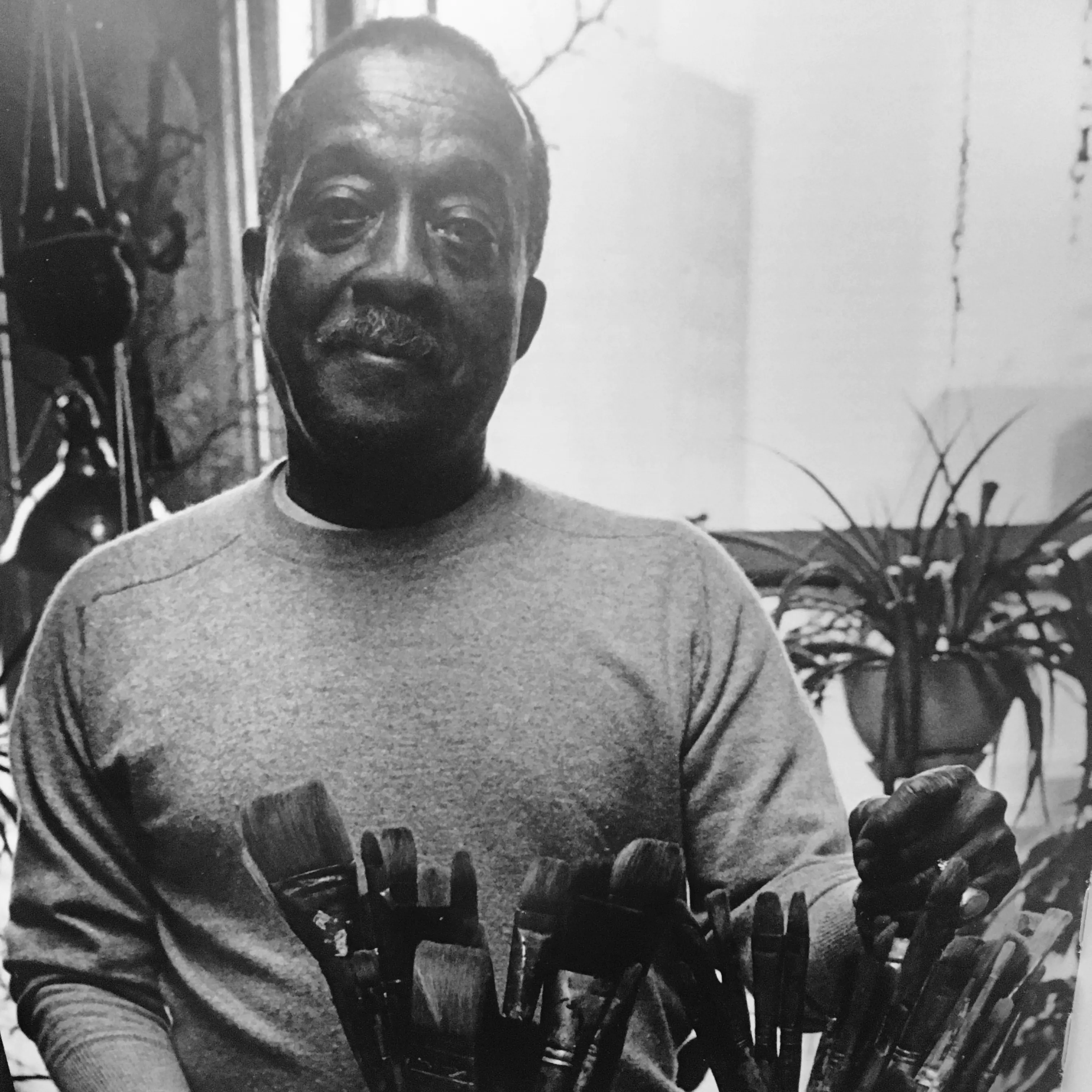You may be unfamiliar with his journey, let alone the name of artist Norman Lewis. Lewis was an incredible spirit. An African-American man born in New York, fond of world travel, challenged and inspired by learning, teaching, and searching throughout his lifetime and artwork. Lewis specialized in Abstract Expressionism and is recognized for his precise color selection, all the while channeling his life experiences and interactions into various forms — including oil on canvas, crayons on paper, and water colors.
Hours by day:
Tuesday, Thursday & Friday, 10 a.m. – 5 p.m
Wednesday, 10 a.m – 9 p.m
Saturday & Sunday, 11 a.m. – 5 p.m
Closed Mondays and legal holidays

Curran Lewis, in front of Norman Lewis’ painting, “Title Unknown” (c. 1960), Oil on Canvas. Photo © Aran Hart
A man of dignity, Lewis expressed his interpretations surrounding morals and values that pertain to humanity and nature. He depicted work that represented the plights of African-Americans in America during the Harlem renaissance and Civil Rights Movement. In addition to his activism, Lewis created poignant works that reflected on his travels through Europe and United States.
Now on display until April 3rd, 2016, PROCESSION: THE ART OF NORMAN LEWIS, opened for viewing at PAFA’s Fisher Brooks Gallery, Samuel M.V. Hamilton Building — just north of City Hall on Broad St.
PAFA is offering FREE museum admission for Procession, every Sunday for the duration of the exhibit.
Combined with the paintings, this exhibit displays a unique and touching collection of personal effects, notes, quotes, a video interview, and diverse library that shine light onto the man who devoted his life to his artistic passion and culture. The collection is set up to appreciate thematically rather than chronologically, guiding one through In the City, Visual Sound, Rhythm of Nature, Ritual, Civil Rights, and Summation.

Norman Lewis (pictured), Photo © Estate of Norman W. Lewis
Lewis was born in Harlem in 1909 and died in Harlem in 1979. During the infancy of Lewis’ professional career, he focused on the “New Negro Movement” as well as African Art. Although he started here, this is not where he would finish. The content of Lewis’ art shifted from African and African-American Art to a more global perception. During the mid 1940s, Lewis altered his subject matter and developed his style. Lewis began his Pure Abstractionism journey that developed to include Naturalist content.
Walking between the rooms and admiring different pieces, we chatted with Philadelphia artist Moe Brooker, who explained that Lewis “kept searching” in an authentic spirit of endless development, “continuing to find inspiration for form and he continues to deal with nature.”

Artist, Moe Brooker. Standing in front of “Fantasy” (c. 1936), Oil and Ink on Canvas. Photo © Aran Hart
As he moved forward in his explorations, Lewis was often overlooked and/or discredited because the nature of his work was deemed as both inappropriate and unimaginable for an artist of color. Brooker noted Lewis’ work was debunked in a time when the perception was that “it was not a possibility that one of color could do abstraction”. As is the case with many men and women of color, Lewis did not receive the accolades he deserved until over a decade after his death, during the 1990s — perhaps not even yet today.
Curator Ruth Fine shared that “Norman Lewis is not a very well known painter due to lack of visibility rooting to racism, but also because his was a style that is not readily categorized… and people tend to get to know people that they can put in categories. Lewis is a complicated painter.”

In the City: Looking at Life. Photo © Aran Hart
To put together Procession, Fine stated she “traveled to various collections over the past few years, and chose those works that would best convey the range of his art and the ideas that permeated the themes that then organized the exhibit.” Fine added she aimed to “give a sense of who the man was as well as the art.” Thus, the exhibition walls and short video tell a story through quotations and conversation that represent Lewis’ philosophy. “Abstraction offers a chance for each person, from a broad range of backgrounds, to bring their own experiences to the paintings… and take away what they want. I think that’s what Lewis wanted.”